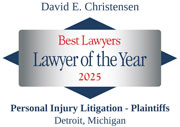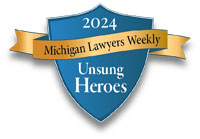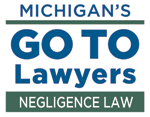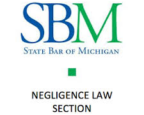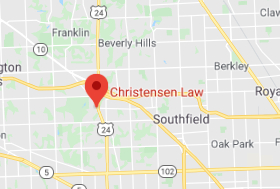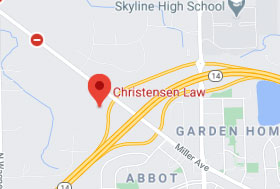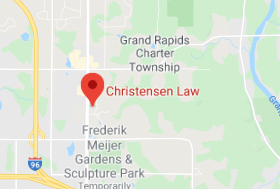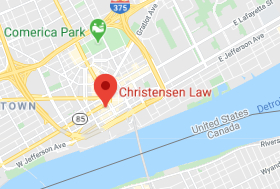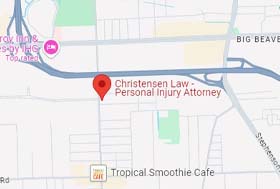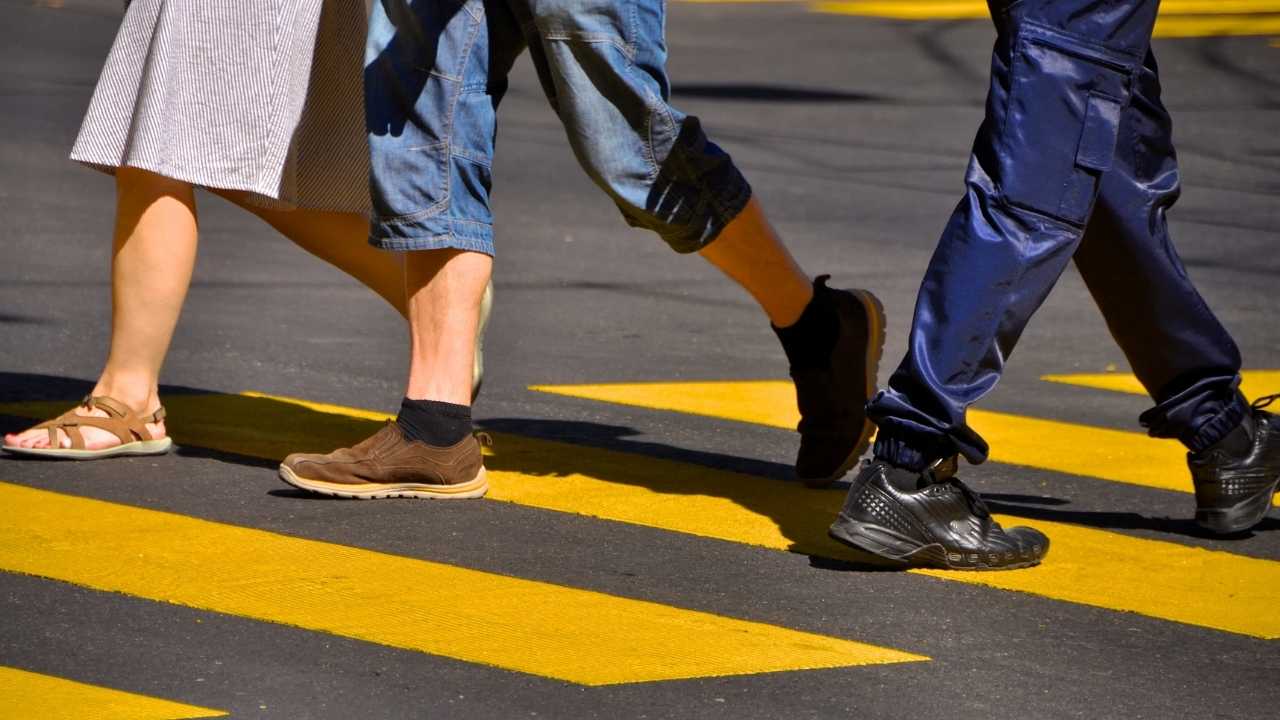
Car crashes cause plenty of damage on their own. However, the results can be truly catastrophic when a vehicle hits a pedestrian. Pedestrians don’t have the same protections as car occupants, and they must rely on the attentiveness and respect of drivers when their paths cross. So, when someone neglects their responsibilities in traffic, pedestrians often suffer the worst consequences.
If you or someone you love suffered injuries in a pedestrian accident, it’s common to feel overwhelmed and uncertain about what to do next. An experienced Southfield pedestrian accident lawyer from Christensen Law can provide much-needed advice about your legal rights and options. For over 30 years, our legal team has fought for the rights of injured people throughout southeastern Michigan. We’ll protect your interests and argue for full and fair compensation for your injuries.
How Can You Get Compensation for a Pedestrian Accident in Southfield?
Pedestrian accidents can leave victims with severe injuries requiring extensive medical care while preventing them from working. If your accident was not your fault, our attorneys will fight for the maximum monetary awards to pay for treatment and protect your financial future. Our Michigan personal injury lawyers will use their experience in personal injury law to explore every option to secure pedestrian accident damages.
We Can Seek No-Fault Insurance Compensation
Michigan is a No-Fault state regarding auto accidents. Under the law, pedestrians can seek compensation for injuries sustained in collisions through their car insurance policy’s personal injury protection (PIP) benefits—no matter who was at fault.
PIP pays for medical treatment, lost income for up to three years, replacement services, and some death benefits for fatal injuries. In addition, PIP does not compensate for noneconomic losses.
Our lawyers can tell you more about changes to the No-Fault insurance system. We can also help you negotiate for a full and fair settlement from your insurer.
We Can Guide You Through the Michigan Applied Claims Plan
Some pedestrians don’t own cars and rely on public transportation to get around town. If you don’t have an auto insurance policy, you could still file for PIP benefits through the Michigan Assigned Claims Plan (MACP). Again, our lawyers can assist with your claim and negotiate for the most advantageous financial outcome.
We Can Pursue a Personal Injury Lawsuit
Like many other pedestrian accident victims, you may have sustained severe injuries and incurred medical expenses beyond your No-Fault coverage limits. In that case, you might qualify for damages via a third-party negligence lawsuit against the at-fault driver.
Our Southfield pedestrian accident lawyers can help you build a case proving your right to compensation from a liable driver. We will work tirelessly to help individuals hurt in car, truck, and motorcycle accidents secure economic justice for you or your injured family member. In addition, we prepare every case for trial and do not shy away from taking legal action when necessary.
Recoverable Damages in a Southfield Pedestrian Accident
Since no two collisions are the same, there’s no such thing as a standard settlement amount for pedestrian injuries. Many factors can influence your compensation package, including the severity of your injuries, the length and nature of any resulting medical treatments, and how the accident has affected your daily life. In Michigan, we can seek pedestrian accident compensation for the following:
- Economic losses: This category includes financial losses such as current and future medical expenses not covered by no-fault insurance, lost income not covered by no-fault insurance, loss of future earnings, and awards to pay for household chores, medically necessary home and vehicle modifications, and any other out-of-pocket costs resulting from your injuries.
- Noneconomic losses: These damages compensate for the human costs of a car hitting you—physical pain, emotional anguish, decreased quality of life, and loss of enjoyment.
- Wrongful death: If your loved one died from their injuries, we could recover the cost of their medical treatment, funeral and burial expenses, and lost income, support, services, and companionship.
Working with our experienced and proven trial lawyers after a pedestrian accident can safeguard you by ensuring the insurance company and other parties place an appropriate value on your case. We will fight for you, so you don’t settle for less than you deserve.
How Long Do You Have to Pursue Financial Awards?
According to Michigan Compiled Laws § 500.3145, you have one year from the accident date to file a lawsuit to recover no-fault insurance benefits. In addition, under Michigan Compiled Laws § 600.5805, you have three years from your accident or loved one’s passing to file suit for personal injury or wrongful death.
If you do not adhere to the statutes of limitations, the court will likely dismiss your case. An expired deadline can also give the insurance companies a reason to deny your claim or reduce your settlement. Our Southfield, MI, pedestrian accident lawyers can help you get started immediately.
Common Types of Pedestrian Accidents
Every pedestrian accident is one too many — and unfortunately, these collisions are getting deadlier. The Federal Highway Administration reports that pedestrian deaths have increased by 53 percent over the past decade. Michigan’s statistics are disturbing as well. According to the 2019-2022 Michigan Pedestrian and Bicycle Act Safety Plan, nearly 2,500 collisions killed 158 pedestrians and injured 1,945 more in one year alone.
While every pedestrian accident is different, many are preventable tragedies that occur due to someone else’s negligence, such as these types of accidents:
- Drunk driving accidents: Drunk drivers are likelier to speed, behave erratically, and fail to notice pedestrians crossing the street, especially in poor weather. According to the Centers for Disease Control and Prevention (CDC), these accidents are a leading cause of fatal pedestrian injuries.
- Distracted driving accidents: Drivers who fiddle with the radio, send a text message, or talk on a cellphone are not focused entirely on the road ahead. Distracted drivers are less likely to see or react safely near pedestrians.
- Reckless driving accidents: Speeding, weaving between lanes, and other forms of reckless driving are common in hurried, aggressive drivers. Unfortunately, the unpredictable nature of reckless drivers presents a considerable risk to pedestrians.
- Left-hand turn accidents: When drivers turn left, they must cross traffic and accelerate into the turn. It can be challenging for motorists to spot pedestrians while also focusing on avoiding oncoming traffic.
- Crosswalk accidents: Jaywalking or failing to heed crosswalk signals can create dangerous situations in traffic intersections.
- School zone accidents: Young children represent the highest risk group for pedestrian accidents due to their smaller size and impulsive nature. People driving through school zones have a greater duty of care to all pedestrians.
- Traffic violation accidents: Drivers can hit pedestrians when they violate traffic laws, such as failing to obey traffic signs and signals, not yielding the right of way to pedestrians, and neglecting to use turn signals.
Pedestrian Accidents Can Cause Severe and Fatal Injuries
Pedestrians are vulnerable to serious and life-changing physical harm when struck by a motor vehicle. Potential pedestrian accident injuries include:
- Head injuries (e.g., concussions and traumatic brain injuries)
- Skull fractures, facial injuries, scarring, and disfigurement
- Neck and shoulder injuries (e.g., whiplash)
- Spinal cord injuries (e.g., paralysis, herniated discs, nerve damage)
- Arm and leg injuries (e.g., fractures or amputations)
- Back injuries (e.g., sprains, strains)
- Abdominal injuries (e.g., internal bleeding)
- Emotional/mental issues (e.g., PTSD or depression)
- Wrongful death
Christensen Law has earned a reputation as a powerful advocate for the severely injured. So, if your case involves catastrophic or fatal injuries, we have the knowledge and experience to serve you.
Pedestrian Accident Liability: Is the Pedestrian Ever at Fault?
It’s difficult to imagine a situation where someone traveling on foot could be entirely responsible for hitting a motor vehicle. However, like anyone else, pedestrians must follow specific rules when traveling along public roads.
The Michigan Office of Highway Safety Planning created a handy guide outlining the state’s pedestrian laws. They supplement our suggestions for what pedestrians should do while walking along public roads:
- Cross streets only at designated crosswalks or crossing areas. Look left, right, then left again before proceeding.
- Walk on the side of the road as far to the left as possible—facing oncoming traffic—when sidewalks are unavailable.
- Avoid walking on the main traveled portion of a highway.
- Obey relevant traffic signs and signals.
- Stop to look both ways down a street if vehicles are at a stop and block their view.
- Make eye contact with drivers before crossing in front of them.
- Wear highly visible or reflective clothing at night.
- Stay observant in parking lots, especially when walking with small children.
If your actions contributed to your pedestrian collision, you could still seek compensation under Michigan’s comparative fault statute (Michigan Compiled Laws § 600.2959). However, the court will reduce your award based on your proportion of responsibility. In addition, if you are more than 50 percent liable, you might be ineligible to pursue recovery. Thus, our lawyers will fight allegations of wrongdoing that could lower your damages or bar you from seeking compensation.
Contact Christensen Law Today
We know what a difficult time this is for you and your family members, but you do not have to face a claim or lawsuit alone. A Southfield pedestrian accident lawyer at Christensen Law will fight for full and fair compensation for your injuries to keep this devastating time from permanently affecting your finances.
Call us now or fill out our online contact form for your free initial case review.



